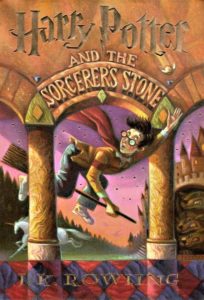Speculative Fiction Trends And Tendencies
Trends in anything are only generalizations. They do not indicate an exclusive, one-way-only route. Nevertheless, trends are a real thing in fiction. Presumably publishers see the success of one book or series in a genre, so they eagerly search for another of like kind.
We know this is true in Christian fiction which started with the trend of prairie romance and has seen the rise of what appears to be the never-ending trend of Amish fiction. In between, speculative fiction nosed its way into the conversation with the supernatural stories by Frank Peretti. But books of like kind had to wait. Other trends surface first, usually in conjunction with the trends in the general market.
 In the not too distant past, we’ve seen such trends as dragon tales, illustrated by Eragon by Christopher Paolini, The Dragonriders of Pern series by Anne McCaffrey, and Dragon Keeper by Robin Hobb. In Christian fiction dragon stories and their success—books such as the Dragons in our Midst series by Bryan Davis and The DragonKeeper Chronicles by Donita Paul—had much to do with opening up traditional publishers to speculative fiction
In the not too distant past, we’ve seen such trends as dragon tales, illustrated by Eragon by Christopher Paolini, The Dragonriders of Pern series by Anne McCaffrey, and Dragon Keeper by Robin Hobb. In Christian fiction dragon stories and their success—books such as the Dragons in our Midst series by Bryan Davis and The DragonKeeper Chronicles by Donita Paul—had much to do with opening up traditional publishers to speculative fiction
Fairy stories, perhaps beginning with Artemis Fowl and the Artemis Fowl series by Eoin Colfer and continuing with The Spiderwick Chronicles by Tony DiTerlizzi and Holly Black, became one of the trends during the naughts of this century. More recently The Throne of Glass series by Sarah Maas have continued this trend. In Christian fiction, Anne Elisabeth Stengel captured the fairy craze with her Tales of Goldstone Wood series, and R. J. Anderson’s Knife trilogy represents fairy stories written by a Christian for the general market (and re-published later by Enclave).
 Among the various trends, dystopian fiction factored heavily for a time. Certainly The Huger Games series by Suzanne Collins and the Divergent series by Veronica Roth have received the most attention, possibly because of their successful movies that followed the publication of the books. But the resurgence of this particular trend might have begun with the City of Ember series by Jeanne DuPrau. In Christian fiction, Jill Williamson capitalized on this trend with her own dystopian, The Safe Lands Series.
Among the various trends, dystopian fiction factored heavily for a time. Certainly The Huger Games series by Suzanne Collins and the Divergent series by Veronica Roth have received the most attention, possibly because of their successful movies that followed the publication of the books. But the resurgence of this particular trend might have begun with the City of Ember series by Jeanne DuPrau. In Christian fiction, Jill Williamson capitalized on this trend with her own dystopian, The Safe Lands Series.
In discussing trends, I can not leave out vampire books. starting with Anne Rice’s Vampire Chronicles and including such series as The Vampire Diaries by L. J. Smith, Anita Blake, Vampire Hunter series by Laurell K. Hamilton, and the highly publicized and successful Twilight Saga by Stephenie Meyer. Christians have also written vampire stories, from John Olson’s “vampire-less vampire story,” Shade.
More recently fairytale retellings and superhero stories seem to be all the rage. More often books make a splash and then become movies which bring in an even wider audience. Wicked by Gregory Maguire is an example of this trend. In Christian fiction Melanie Dickerson has been writing reworked fairy stories for some time, starting with The Healer’s Apprentice. Jill Williamson and her son Luke have done the same sort of thing in their middle grade books series, Tinker.
While superhero books are popular in the general market and can be spin-offs of the Marvel characters, Christian fiction seems to lean toward supernatural suspense instead: read, angel and demon books. Shannon Dittemore’s Angel’s Eyes series is one example of this, but I think there are many more in the rank of self-published books that follow this trend.
I could go on. Epic fantasy became a trend when The Wheel of Time series by Robert Jordan was on the bestselling lists. Jill Williamson broke into Christian publishing with her own epic fantasy, The Blood of Kings series. Patrick Carr did likewise with his Sword and Staff series.
Then there is steam punk, and what about space opera or urban fantasy? In the Christian market one of the trends seems to be end times books.
 The thing I find interesting is that each of these trends seems to have a beginning with some book that did not follow a trend. Either that, or one particular series, like the Harry Potter series, seems to have broken the mold, so that few, if any, books of like kind surface. My guess is that readers will all too quickly identify similar books as knock-offs, even if they aren’t.
The thing I find interesting is that each of these trends seems to have a beginning with some book that did not follow a trend. Either that, or one particular series, like the Harry Potter series, seems to have broken the mold, so that few, if any, books of like kind surface. My guess is that readers will all too quickly identify similar books as knock-offs, even if they aren’t.
What I’m wondering is, where do we go from here?
With the explosion of self-publishing and small publishers, I wonder if trends will remain pronounced or if writers writing the stories that they themselves like so much will remain true to their passion and consequently provide a wider array of books than we’ve seen in the past.
On the other hand, I wonder if movies full trends. People fall in love with the movie world and write a novel that fits into that genre. If that’s true, I wonder if science fiction will escape from the space opera franchises of Star Wars and Star Trek. Not only have those been successful movies, they have “soft science” which makes them more accessible to a wider audience.
All in all, I’m simply curious where speculative fiction, and in particular, Christian speculative fiction, goes from here. What are your thoughts?
































What I like to do is look at tropes, etc. and think about how they can be approached in a more realistic/detailed manner, or even completely reversed in a way that makes them an entirely different type of story. This can be as simple as changing the motive for why a character makes a certain decision. There is a trope, for instance, of one of the ‘good guys’ turning evil and all this friends wanting to redeem him simply because he is their friend.
A way to counter this trope could be to have someone try to redeem the evil person for more selfish reasons, like if they knew the evil person could be useful if he was redeemed and used his abilities for good. This is actually a partial motive in several of my stories, and it’s been pretty useful in terms of exploring human nature and what it takes to truly care about someone. Many times characters can start out on their journey for selfish reasons like this, but end up caring in a more positive and deep way at the end of the story.
Interesting approach, Autumn. Thanks for giving that window into your writing. I like the possibilities there.
Becky
It also makes your heroes more complex. Could the person seeking to “redeem” the “bad guy” for purely utilitarian purposes be on a downward character arc himself so he (or she) winds up worse than the one they sought to reform?
There has been a troubling trope of “my sexy monster boyfriend” in young adult and even women’s fiction. It glorifies abusive relationships. They compare it to the fairy tale of Beauty and the Beast, but it’s turned inside out so the lover is beautiful on the outside and ugly within.
I’m working on subverting that trope in my WIP. Loved to Death is meant to be a horror novel rather than a romance.